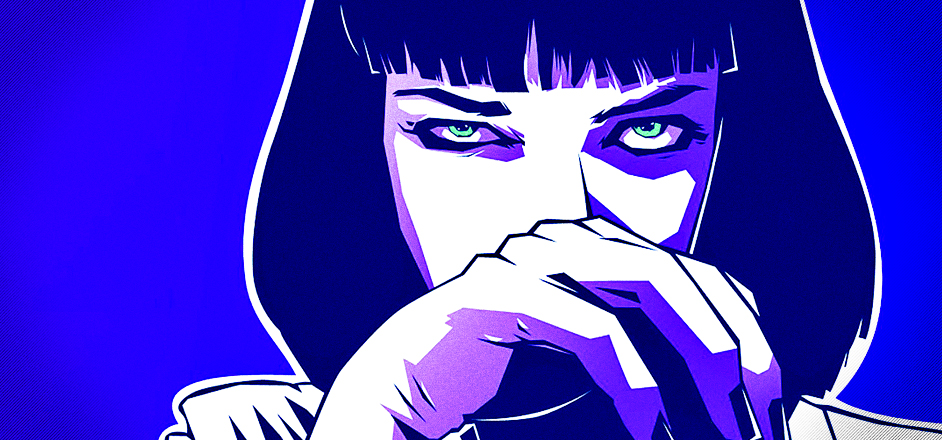There’s no need to be afraid of things that go bump in the night any longer. It’s 2017, and most of your friends do it all the time anyway, even if you don’t know it — key bumps that is, late night’s newest dirty little not-so-secret.
You know the scene. You’re at a bar and there’s an unspoken magnetism between everyone there. Watching the crowd, you see some of them casually lean over and whisper into one another’s ears, imparting handshakes and plastic baggies. It’s a silent exchange, even if you're not a part of it.
“I like to do coke when I drink because it makes me feel infinite,” says Eli Strange, a person I’m interviewing at a local Colorado bar that doubles as a casual haven for cocaine.
As an ongoing cultural staple since its reemergence in the 1960s, cocaine has been a life of the party for years — second in popularity only to weed. However its visibility has often been relegated to the shadows, secretive and sly. Now, it’s quite the party favor, with acceptance of users compounding by the weekend. Open use of cocaine is on the rise, and young adults are drinking and doing the bumpty-bump at night with a candid ability to get back to school and work desks by day — without missing a beat.
An officer from the Denver County Sheriff’s Department — who preferred to remain anonymous for this post — explained to me before going out the division of drug users as established by law enforcement guidelines.
“We have found that there are two distinct types of cocaine users” he said. “Those that use it habitually and those than use it recreationally. Habitual users tend to have extensive criminal records.”
So on one hand we have the habitual users; the ones who have completely blown their nasal passages by repeated, long-term use. They stay on the side of paranoid, and are likely too skinny for their own good. And then there are those who look normal. They go to work, are college graduates, own successful businesses, are doctors, lawyers, and have a generally healthy work and play life balance.
Strange, a local bar-goer, explains that he is actively attending a university, and works two jobs on the side. On a typical day, he wakes up early and heads to class at Metro State, a university tucked in Denver’s downtown. After school, he goes to work where he slays on burritos at Chipotle. After, you’ll find him at the local bar dumping pitchers down his throat and possibly bumping cocaine into his hardworking human vessel — or maybe at home on a quiet night, hanging out with his roommates over Netflix and Ramen, he says.
“I don’t do coke every time I drink, because I don’t buy it,” Strange explains, “but there are so many people who are willing to share a couple key bumps or a few lines.”
On this night, I’m frolicking amongst happy suburbanites at their favorite dive to get a better perspective of the casual cocaine lifestyle. The scene is complete with all the clichés, drunk girls singing karaoke, couples breaking up over shots and cigarettes, and avid pool players boasting rolls of quarters and buckets of domestic beer.
Oh, and like, six different cocaine dealers — by my count, that’s one dealer for every eight people at the bar. In short, everyone is getting lit, and it’s obvious.
After being introduced to the lot of them by Strange, I learn that many do indeed lead “normal” lives. The short-version of this interaction yields a group of girls who work at a nearby pediatrics clinic, a guy who is a foreman in the oilfield, dozens of people who work in the service industry, and many others who can relate to Strange’s story — just college kids trying to survive on their mediocre but necessary part-time jobs.
The long-version, however, is growing longer as the night goes on, because cocaine. It makes them talk. Forever.
Though admittedly, this is Colorado, an open Mecca of drug use. Last month, WalletHub released statistics on which areas in the country drug use is most prevalent. Colorado came in third place behind Washington D.C. and Vermont — but only if weed counts.
Our officer recited personal accounts of Colorado drug-related offenses as well, ones that were less violent and rowdy than drug-related offenses in other states — at least according to the areas he served as an officer. They can get violent, he says, but his opinion is that Colorado’s instances don’t compare. It's a unique cultural shift.
According to the National Institute on Drug Abuse statistics from 2016, cocaine use has remained relatively stable in this country (some reports even saying it’s going down), and its use has dropped substantially by teenagers. Though by personal accounts that are becoming increasingly prevalent, using cocaine might not be going up, but its visibility in nightlife certainly is.
Back at the bar, I’m interrupted by Strange carrying two more pitchers of beer to the table and a flock of friends crowding behind him.
In the ultimate display of his suburban soul, Strange quotes his favorite celebrity Kylie Jenner:
“It’s the year of realizing things," he says. "And we realize that we like cocaine and school and work. We can do both so, why not?”
Suddenly, he abandons me at our table to go snort toilet seat lines; followed by his ownership of the dance floor when Bruno Mars fills the speakers of the bar and the hearts of the locals. Many places in Colorado, like this one, praise a certain ‘Keep Life Weird’ motto, but I say, this little slice of life will always praise the ‘Normalize Numbies’ movement all the same.
“Numbies?!” Strange shouts. “Give me that bag, I love numbies!”



Leave a Reply
You must be logged in to post a comment.